Our subway network works because it connects riders to a vast number of different places and connect with new people and new opportunities.
Queens is the fastest growing borough of New York but the last new subway station to be opened in the borough was in 1988. Since then the population of the borough has increased by 17% and ridership on the subways in Queens has increased by 42%.
Not only is Queens adding new residents but so too is Queens adding new jobs. Queens is seeing more new job growth than Manhattan! As more and more Queens residents choose to work within their own borough our already limited transit system is unable to serve the new commuter patterns properly.
Without new transit options the new residents will be forced to cram onto overcrowded subways or add traffic and pollution by driving.
The QueensLink aims to be a prototype for planning, design and construction of new transit links in the outer boroughs to create a new type of project where all parties benefit.
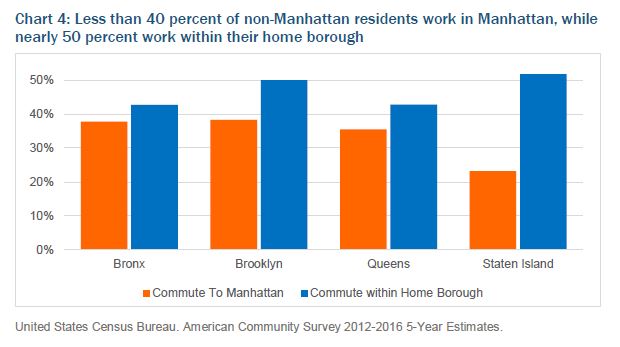
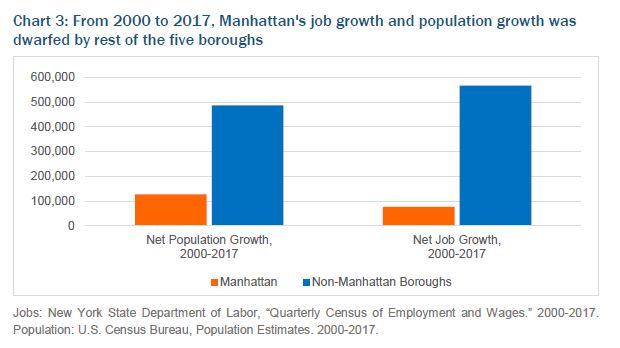
Howard Beach to 34th St: A Train
From Howard Beach to 34th St the QueensLink saves a rider:
15 minutes one way. That’s a half hour a day.
or
2.5 hours a week.
or
125 hours a year.
Howard Beach to 34th St: QueensLink
QueensLink = More Trains, Less Crowding
Queens has the highest population per mile of subway of the five boroughs. The borough needs transit equity in order to deal with growing population and new job markets. Residents need transit that can deal with current and future demand.
Building transit into the outer boroughs to undeserved neighborhoods will save New Yorkers time and money. New Yorkers have on average one of the longest commutes in the nation
Right now the on Queens Blvd the M and R trains are limited in how many trains per hour (tph) can run because of a number of physical bottlenecks. One of these bottlenecks is at Forest Hills where, due to poor design, the station can only handle about 20 tph (where others can do 24 or even 30). This means Queens subway riders have to wait longer between trains.
But if the M was to be rerouted to Rockaway Park via the QueensLink that would open up space at Forest Hills. Now the G train can make its triumphant return since there is now enough space available.
In southern Queens the A has to split its time between Far Rockaway and Lefferts Blvd with only five trains at rush hour going to Rockaway Park (the rest of the time riders are forced to use the hated shuttle). With the QueensLink the shuttle is no more! The M provides a one-seat-ride to northern Queens and midtown Manhattan while the extra A trains can boost service to Far Rockaway.
Population per Mile of Subway
The MTA Rockaway Beach Branch study found that over 47,000 riders would use the line a day if it was reactivated as a subway. But with the additional service added by extending the G, the QueensLink would help over 225,000 riders a day in Queens.
Queens: A divided borough
Because of the legacy of subway construction northern Queens is served by lines only going to midtown Manhattan while southern Queens by lines going to Brooklyn and Lower Manhattan. Any rider coming from southern Queens trying to get to midtown must take a long and crowded trip through Brooklyn and downtown Manhattan first.
Connecting northern and southern Queens isn’t just about getting to midtown faster but also transit equity for all riders. Half of commuters in Queens work within the borough. Rail transit today does not serve these commuters who are forced onto slow, crowded buses or chose to drive, creating traffic and pollution.
Creating a subway link would create a new way to travel throughout the borough, and indeed throughout the city. A new connection would create new opportunities as commute times would drop. Workers could find new jobs closer to home or be able to reach higher paying jobs.
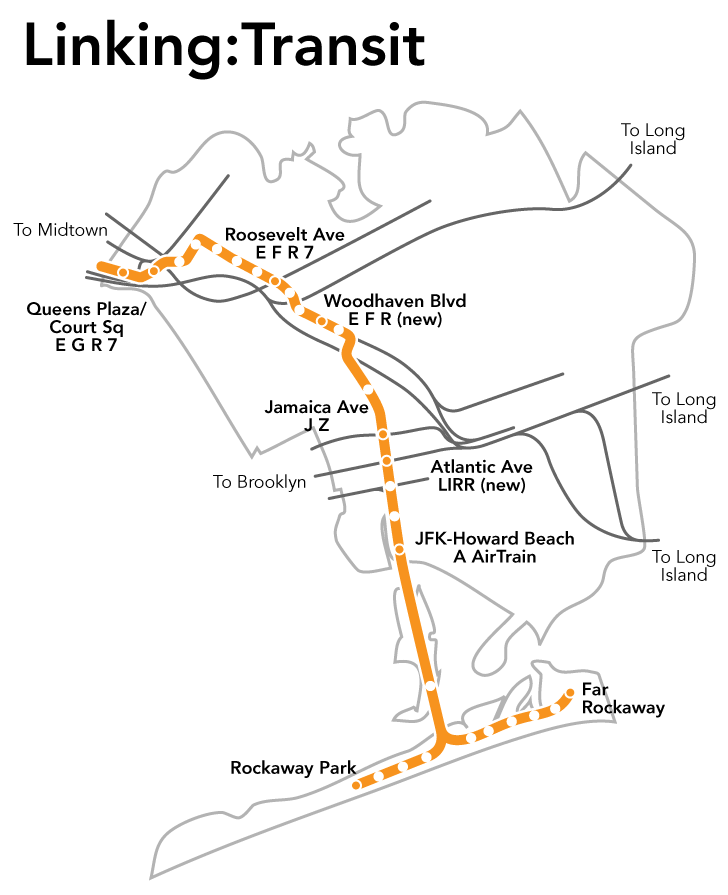
Connect to Queens, Connect to the City
Connecting southern Queens to the Queens Blvd Subway also connects riders to other transit lines to allow them to reach job centers like Flushing, Jamaica and Long Island City without a car. Imagine going from Ozone Park to a game at CitiField without having to drive?
Travelers would also have a quicker option to get to Howard Beach and the AirTrain to JFK Airport. In the summer residents of Astoria or Elmhurst can finally enjoy the beaches of Rockaway without having to drive.
Riders from other boroughs will benefit as well. No longer would a rider have to suffer on a crowded subway car running through midtown when they need to get to Queens.
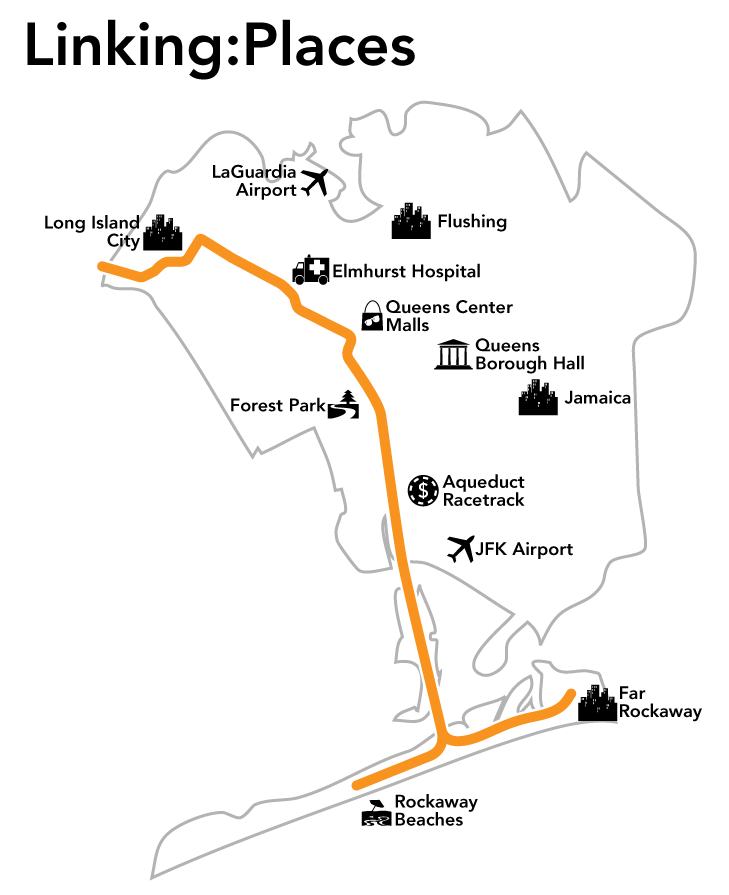
Better Transit = Safer Roads
Improving transit isn’t just a time saver for Queens, it will help residents throughout the borough. Southern Queens residents currently have some of the longest commutes in the entire city. Since many of them drive that means more time for cars to be clogging the roads. Faster transit means fewer commuters have to drive and less traffic.
The QueensLink runs parallel to Woodhaven Blvd and Cross Bay Blvd, as close as 600ft away in some places. These arteries are clogged with traffic and connect drivers to other major highways also clogged with traffic. This makes the QueensLink the ideal project to have a direct impact on the amount of traffic on the roads and highways.
Faster transit will also reduce traffic headed to JFK Airport on other major highways like the Belt Parkway and Van Wyck Expressway.
Fewer drivers on the roads will not only speed up commutes for those who still drive but also bus riders and streets will be safer for pedestrians and bikers.
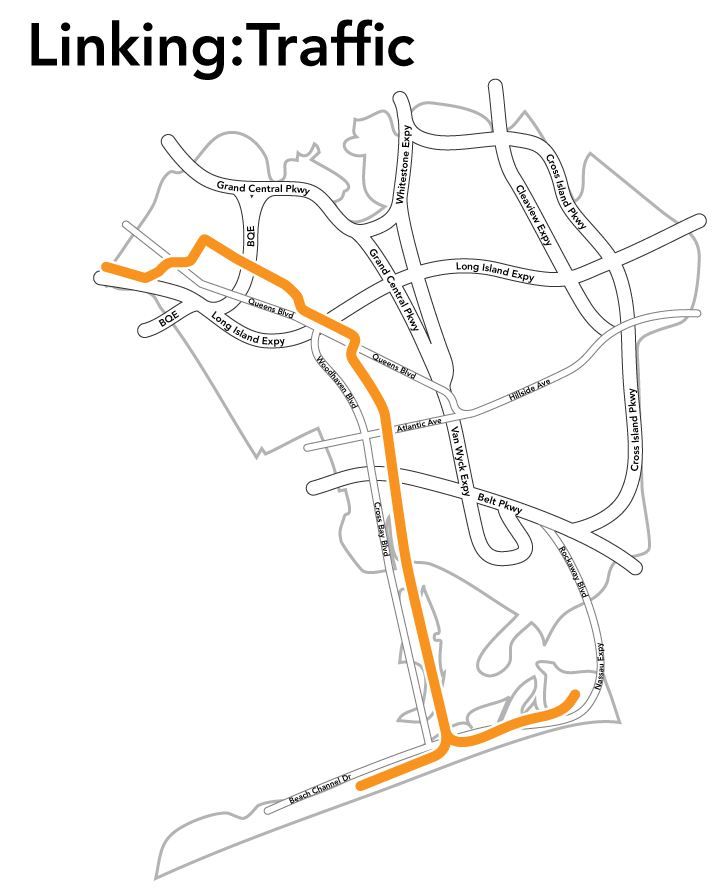
Rails & Trails: A healthier city
New land for parks is scarce. A proposal to transform the abandoned Rockaway Beach Branch ROW into a High Line style park was proposed in 2015 but have not proceeded. Most importantly, the proposed park was designed to impede the reactivation of the rail line for transit. Many in the neighborhoods through which the line runs wanted to see transit or some combination of both.
The QueensLink proposed creating up to 33 acres of new park space in the heart of Queens. By placing the new rail on a smaller, quieter concrete guide way or by placing it underground, the current embankment can be removed to open up space on the ground. This new park space can be active or passive depending on the location and feature a bike path connecting different neighborhoods. Connecting different parks via transit would also give undeserved residents more access to recreational facilities.
This combined park and transit concept has been successfully built in cities across the country, such as Oakland, CA, Boston, MA, Atlanta, GA, and Miami, FL.



